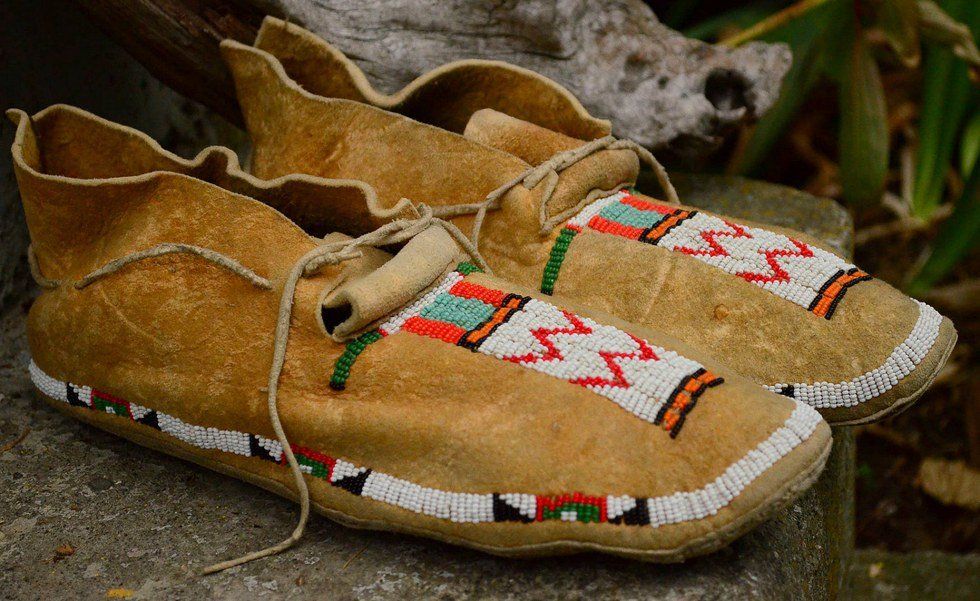Jane Elliot is a anti-racism, feminist, and LGBT activist. Elliot was born in Riceville, Iowa on the 27th of May in 1933. When Martin Luther King Jr was assassinated on April 4th, 1968, as many people she was devastated by the news. What made her more upset was whens she turned on the TV and a reporter asked a local black leader "When our leader [John F. Kennedy] was assassinated, his widow held us together. Who's going to control your people?" She couldn't believe that the reporter automatically assumed that John F. Kennedy was the "white people leader." From that moment, she made one of the biggest decisions of her life that would foresee her career for many years to come.
"Oh great spirit, keep me from ever judging a man until I have walked a mile in his moccasins."
A Sioux Prayer
She entered her classroom to her young students walking in and one of her students asked, "They shot that King yesterday, why did they shoot the king?" (Bloom). She asked the students a very important question, "How do you think it would feel to be a negro boy or girl?" (Bloom). Astonishing enough, her students were enthusiastic about the idea. So then began her famous "Blue Eye/Brown Eye" exercise.
She started off the exercise by saying that people have melanin in their hair, skin, and eye color. The darker the persons eyes, the smarter they were. This essentially separated the children by the lightness or darkness of their eyes. As her lesson went on, she talked about how "brown-eyed people have more chemical in their eyes, so brown-eyed people are better than blue-eyed people" (Bloom).
Instantly, she could feel the tension growing between her students over eye color.
The blue-eyed children put up some resistance to the accusations made against them. One little brown-eyed boy suggested that they use separate water fountains because they didn't want to catch anything that the blue-eyed children had. The phrase, "he's a bluey" even started among her students. One student pointed out something that was inevitable, "Mrs. Elliot, how come you're the teacher if you have blue eyes?" Before she could process an answer, a little boy piped up, "if she didn't have blue eyes, she'd be the principal or superintendent."
In that moment, Elliot found out how simple it was for racism to transfer amongst a group of people. She found out how it felt to be singled out and to be made a part of the "lower class" of individuals based off her eye color. Just in a matter of minutes, she was being singled out as the teacher for only being a teacher, and not anything else in the higher order of leadership in a school, because of her eye color.
At lunchtime, she went into the teacher's lounge and told her fellow co-workers what she has been doing all morning. She described how "several of her slower kids with brown eyes has transformed themselves into being confident leaders of the class. Withdrawn brown-eyed kids were suddenly outgoing, some beaming with the widest smiles she had ever seen on them" (Bloom).
On Monday, she reversed the exercise. These brown-eyed children who found confidence were all the sudden becoming withdrawn. When the exercise ended, she asked the children to write down what they felt. A compelling response was written by Debbie Hughes:
"The people in Mrs. Elliott's room who had brown eyes got to discriminate against the people who had blue eyes. I have brown eyes. I felt like hitting them if I wanted to. I got to have five minutes extra of recess." The next day when the tables were turned, "I felt like quitting school. . . . I felt mad. That's what it feels like when you're discriminated against" (Bloom).
Elliot shared the essays with her mother, who sent them off to the local editor of the Riceville Recorder. He printed them under the headline, "How Discrimination feels." Many people were dumbfounded by the effectiveness of this exercise.
Elliot performed something on students that would never be allowed to do in school today. Elliot performed a simple exercise that explained a huge problem in today's world. In just a matter of a few days, she was able to turn kids against one another just based off their eye color. The importance of this exercise should never be doubted. Racism is still a major problem in today's world, just as it was when Jane Elliot performed this experiment. She taught the lesson of walking in someone else's moccasins for a short period of time, when others have to deal with that discrimination every single day of their lives. Many people ridiculed her for doing "cruel" on white children, and how it will cause "great psychological change." However, I would have to disagree. If every child went through that experiment growing up, I personally believe that we wouldn't have racial tension in this world. I personally believe that this experiment would've caused a great physiological change and that change would be to not be discriminating or hateful towards someone that is considered "different." At the end of the day, we all bleed the same blood. This experiment could be used for many different types of religions, sexuality, race, and even disabilities to show "normal" people how it feels to be personally singled out. When I ask people if they have ever heard of the Jane Elliot Exercise, many reply with no. Everyone needs to know this experiment. Ideology that brews hateful actions in this world will be the thing that ends the world.
For more information, visit: Smithsonian and http://www.janeelliott.com/
Source: Bloom, Stephen G. "Lesson of a Lifetime." Smithsonian. N.p., Sept. 2005. Web.





















